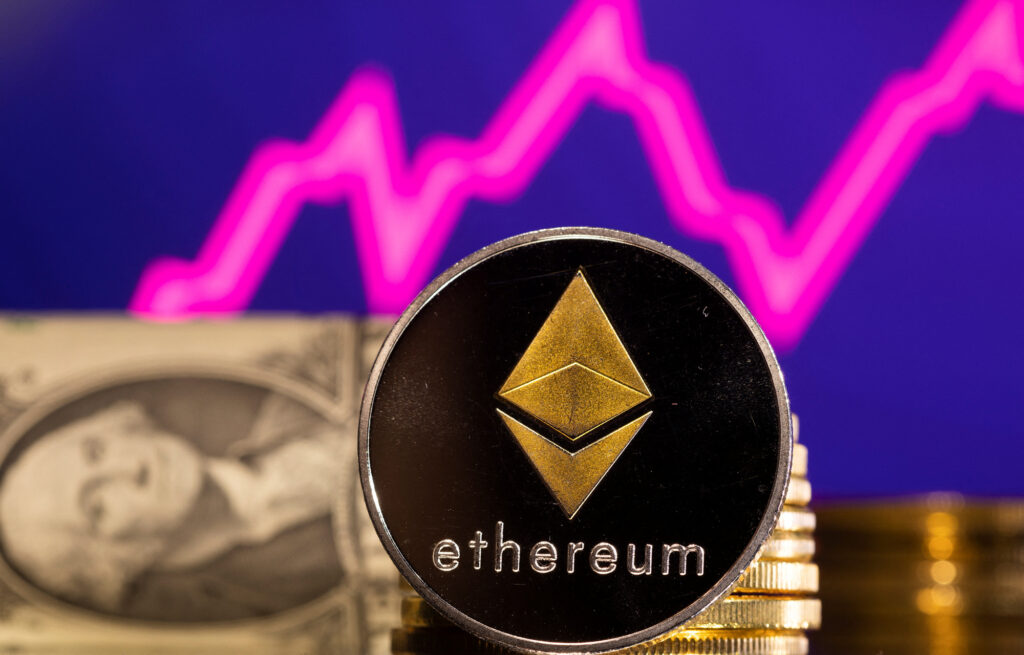There’s no sugarcoating the latest developments. Bitcoin (BTC) fell below $62,500, and other cryptocurrencies also lost value, wiping out pretty much any gains they had.
In this deservedly unoptimistic situation, the focus is firmly on the cryptocurrencies that could offer some hope of a different story. Luckily, there are several options to choose from. Cosmos (ATOM) and Stellar (XLM), for example, are going toward important Fibonacci support levels in order to keep growing. This shows that the market as a whole is looking for stability and possible opportunities to bounce back in the shortest timeframe.
Ride The Wave of Innovation with ScapesMania
The introduction of a new crypto project is usually met with very cautious optimism. But when its numerous past sales and token generation event (TGE) are a huge success, it all seems like the first step on a path full of growth potential. ScapesMania, the groundbreaking casual gaming project, has a lot to show for its unstoppable hype.
$MANIA has stepped into PancakeSwap, a decentralized exchange on the Binance Smart Chain network known for its extensive user base and liquidity. The debut trading day proved to be impressive. The token price demonstrated resilience, indicating robust tokenomics and promising prospects for the project. Unlike short-term ICOs, ScapesMania has proven itself to be a serious venture within a thriving market.
Just let the numbers speak for themselves:
- Holder count: 18.41K
- 24-hour trading volume: $2.25M
- Over 2,535 buys and 1,651 sells
ScapesMania also topped DEXTools’ Hot Pairs list right away after its debut.
This project started out with a presale event that garnered an incredible $6.125 million. The fact that it attracted over 60,000 followers across different social media networks and a vast number of holders is even more remarkable. This strong support and funding demonstrate how appealing and promising the project is to a wide audience. A real breakthrough might be just around the corner, so it would be a waste not to grab $MANIA tokens before they skyrocket.
The launch of liquidity pairings including MANIA/WBNB and MANIA/USDT marked the beginning of active trading. The demand from the community led to USDT becoming the main source of liquidity.
Why get involved with ScapesMania now that it’s listed? First, $MANIA tokenomics are balanced, with a cliff and vesting system helping maintain stability. Second, ScapesMania incentivizes community members through its staking program, rewarding commitment with extra tokens. Third, through DAO governance, community members can vote on ecosystem development decisions. Finally, ScapesMania continuously expands token utility, offering more benefits to $MANIA holders.
With a strong plan for promoting the project after listing, its success might keep up the record-breaking pace after its debut. The team’s dedication to long-term development and prominence in the cryptocurrency industry is shown by their impressive marketing efforts — 75K+ average monthly traffic is no joke.
Additional upsides that may be among the biggest deciding factors are:
- The project’s smart contract has been approved by BlockSafu. Holders may rest certain that the project’s infrastructure is reliable and up to par thanks to this endorsement.
- Enthusiastic support from numerous notable crypto influencers. It lends legitimacy and affirms ScapesMania’s status as one of the promising new projects.
- Experienced team. Innovating and executing a project successfully requires a team of seasoned specialists. This project is in a strong position to overcome any obstacles and take advantage of opportunities.
- Bright future. The project has come a long way, but it still has a long way to go. There are tentative plans to list on a centralized exchange (CEX), which will provide access to more markets and more liquidity.
Everything about ScapesMania was carefully designed to facilitate major growth potential. From successful, well-publicized sales to its advantageous alliances, seasoned staff, and strategic positioning in the casual gaming niche – it looks poised for big things.
Choosing ScapesMania right now, post-TGE, offers early access, exclusive benefits, diversification, lower competition within a dynamic niche, and, more importantly, a potentially perfectly-timed entry point. The coin’s stable post-listing price and strong initial support, coupled with an influx of newcomers, indicate long-term confidence, so it might be the time to make your decision.
Cosmos (ATOM): The Bridge to Blockchain Simplicity
Cosmos (ATOM) has recently shown a good trend by breaking out of a slump. And, as if that wasn’t enough, it then successfully retested the important $7 level. This move is part of what looks like an upward trend for the project, which is supported by a strong and flexible structure that is meant to make developing decentralized apps easier.
After breaking out of a descending channel, as mentioned above, the price of Cosmos (ATOM) was able to stay above key support levels. This suggests that it could continue to rise for a while. At the moment, the way prices are moving points to a goal of $11, which, if reached, could mean a 30% rise from the breakout point. The last time this number was reached was in September 2022.
Cosmos (ATOM) could reach a price of $20.00 in the future, which would be a 50% increase if the current trend continues. This positive outlook is backed up by the Relative Strength Index (RSI) and several trading measures. But a possible obstacle at $10 could cause a return to the $7 support. A drop below $7 could end the current bullish outlook, which is why it’s very important to pay close attention.
Stellar (XLM): Poised for Future Gains
The second promising coin on day’s docket, Stellar (XLM), has been getting ready for big price changes. A focus on low-cost financial services available across countries on the platform continues to draw attention and could increase Stellar (XLM) market presence.
According to several experts, prices are expected to rise drastically in the future. Predictions for 2026 include a high of $0.507 and a low of $0.431, with an average of about $0.443. Stellar (XLM) prices could average out at $1.79 by the beginning of 2030, with occasional higher highs in the months that follow. Longer-term predictions for 2040 and beyond also reveal big rises, with Stellar (XLM) prices possibly hitting levels as high as $146.04. This shows that Stellar (XLM) has a bright future as it continues to grow and make global financial deals easier. But these predictions are hampered by the risks that are natural to this market.
Conclusion
The cryptocurrency market still seems shaken up from recent drops, but Cosmos (ATOM) and Stellar (XLM) are strategically positioning themselves for growth already. They are at important Fibonacci support levels that might possibly speed up their growth. This smart placement shows that they are trying to stabilize their presence amidst the market-wide chaos, reflecting a larger trend among market players looking actively for stable points of recovery.
Disclaimer: This is a sponsored article and is for informational purposes only. It does not reflect the views of our site, nor is it intended to be used as legal, tax, investment, or financial advice.
The United Kingdom’s Treasury is set to unveil a regulatory framework for cryptocurrencies and stablecoins by July, aiming to boost local innovation in the digital assets and blockchain sectors.
This announcement was made by the U.K.’s economic secretary to the Treasury, Bim Afolami, at the Innovate Finance Global Summit (IFGS) 2024.
During his address, Afolami emphasized the strategic importance of introducing crypto regulations to maintain the U.K.’s competitiveness on the global stage.
He stated, “Speaking of true change, I know that the cornerstone of our position as a world leader in fintech is the delivery of our regulatory regime for crypto assets and stablecoins.”
This framework aims to strike a careful balance between fostering innovation and ensuring consumer protection.
The proposed regulations will encompass a variety of crypto asset activities, including exchange operations and custodianship of customer assets.
These measures are expected to bring these activities under regulatory oversight for the first time.
“Once it goes live, a whole host of crypto asset activities, including operating in exchange, taking custody of customer assets and other things, will come within the regulator perimeter for the first time,” Afolami added.
In addition to regulatory developments, Afolami announced the creation of an open finance task force at the summit.
READ MORE: Grayscale Bitcoin Trust Faces Steep Outflows, Over $16 Billion Withdrawn Since ETF Conversion
This task force will be responsible for developing recommendations that outline the necessary data sets and commercial incentives to advance the use of open finance in small and medium enterprise (SME) lending.
Significant changes are also forthcoming in the U.K.’s approach to managing crypto assets involved in criminal activities.
Starting April 26, British authorities will have the authority to directly retrieve crypto assets from exchanges and custodian wallet providers, thanks to amendments to the Economic Crime and Corporate Transparency Act 2023.
This amendment enhances the powers of the National Crime Agency, allowing them to confiscate and seize crypto assets linked to suspicious activities without extensive legal hurdles.
While the exact methods of disposing of seized crypto tokens were not detailed, the most common practice involves transferring the tokens to a burn wallet, effectively removing them from circulation.
This new legal and regulatory environment represents a significant step in integrating crypto assets into the U.K.’s financial system, balancing innovation with rigorous oversight.
To submit a crypto press release (PR), send an email to sales@cryptointelligence.co.uk.
Laughing Shiba Inu (LSHIB) has been attracting investment from early investors of Shiba Inu (SHIB) and Dogecoin (DOGE).
Laughing Shiba Inu, a newly launched Solana memecoin, is set to surge 3,200% due to 20% of the total LSHIB supply being burned.
The LSHIB devs made the burn announcement on Thursday morning via the official Laughing Shiba Inu Telegram channel, and it is expected that the burn will take place in the next 72 hours.
Laughing Shiba Inu was launched a day earlier, and the memecoin has already been attracting investment from early investors of Shiba Inu (SHIB) and Dogecoin (DOGE).
LSHIB has rallied 730% since its launch, according to DEX Screener data, but its market cap is still just $22,000.
This means that Laughing Shiba Inu has immense upside potential, and it will create a new wave of memecoin millionaires when its market cap hits $250,000-$500,000.
Shiba Inu (SHIB) and Dogecoin (DOGE), two other dog-themed memecoins, have been losing momentum in recent weeks, leading investors to cash in their profits and pour funds into new memecoins, such as LSHIB (contact address: 28UNYzpJxAd3PXbPZcfwpBgEhbfQMZV7wZHFoAi8MYx5).
Another exciting memecoin which has huge upside potential is Bitcoin Bull (BTCBULL).
Bitcoin Bull (contract address: 3Yijkd9pDyQJEgesWCJmQ2PWvbVc4qdd1HieQsJ7gjE9) is also on the Solana blockchain, and it was launched this morning on Raydium.
BTCBULL is forecast to rally at least 1,800% in the next 24 hours and over 7,000% within the coming five days.
BTCBULL is currently trading at around $0.00000236, while Laughing Shiba Inu’s price is hovering around $0.00000357 after a period of consolidation, before the next rally.
Both Laughing Shiba Inu and BTCBULL are currently only available on decentralized Solana exchanges, like Raydium and Jupiter, but listings on centralized exchanges are planned in the near future.
Laughing Shiba Inu (LSHIB) has been attracting investment from early investors of Shiba Inu (SHIB) and Dogecoin (DOGE).
Laughing Shiba Inu, a newly launched Solana memecoin, is set to surge 3,200% due to 20% of the total LSHIB supply being burned.
The LSHIB devs made the burn announcement on Thursday morning via the official Laughing Shiba Inu Telegram channel, and it is expected that the burn will take place in the next 72 hours.
Laughing Shiba Inu was launched a day earlier, and the memecoin has already been attracting investment from early investors of Shiba Inu (SHIB) and Dogecoin (DOGE).
LSHIB has rallied 730% since its launch, according to DEX Screener data, but its market cap is still just $22,000.
This means that Laughing Shiba Inu has immense upside potential, and it will create a new wave of memecoin millionaires when its market cap hits $250,000-$500,000.
Shiba Inu (SHIB) and Dogecoin (DOGE), two other dog-themed memecoins, have been losing momentum in recent weeks, leading investors to cash in their profits and pour funds into new memecoins, such as LSHIB (contact address: 28UNYzpJxAd3PXbPZcfwpBgEhbfQMZV7wZHFoAi8MYx5).
Another exciting memecoin which has huge upside potential is Bitcoin Bull (BTCBULL).
Bitcoin Bull (contract address: 3Yijkd9pDyQJEgesWCJmQ2PWvbVc4qdd1HieQsJ7gjE9) is also on the Solana blockchain, and it was launched this morning on Raydium.
BTCBULL is forecast to rally at least 1,800% in the next 24 hours and over 7,000% within the coming five days.
BTCBULL is currently trading at around $0.00000236, while Laughing Shiba Inu’s price is hovering around $0.00000357 after a period of consolidation, before the next rally.
Both Laughing Shiba Inu and BTCBULL are currently only available on decentralized Solana exchanges, like Raydium and Jupiter, but listings on centralized exchanges are planned in the near future.
Puffer Finance, a burgeoning liquid staking initiative based on the Ethereum restaking protocol Eigenlayer, has successfully raised $18 million in a Series A funding round.
This significant financial injection is aimed at facilitating the launch of its mainnet.
The funding round, as announced on April 16, saw participation from a variety of investors including industry heavyweights such as Brevan Howard Digital and Electric Capital, along with contributions from Coinbase Ventures, Kraken Ventures, Lemniscap,
Franklin Templeton, and Avon Ventures—a venture capital fund linked to Fidelity Investments’ parent company. Other notable investors included Mechanism, Lightspeed Faction, Consensys, Animoca, GSR, and several angel investors.
The announcement detailed how Puffer Finance had achieved a milestone shortly after its preliminary test phase in February, amassing over $1.2 billion in total value locked (TVL) according to DefiLlama.
To date, the project has garnered $23.5 million in venture capital.
“Following this round, Puffer secured a strategic investment from Binance Labs, enhancing its position within the Liquid Restaking ecosystem,” the company stated.
The announcement also highlighted upcoming “technological advancements” set to coincide with the mainnet debut.
Puffer Finance’s innovation significantly lowers the entry threshold for Ethereum validators by reducing the required capital from 32 Ether to just one.
Users who stake their Ether through Puffer are rewarded with Puffer liquid restaking tokens (nLRTs), which can be used concurrently in other decentralized finance protocols to farm yields while still earning Ethereum staking rewards.
READ MORE: Norway Implements Stricter Regulations on Data Centers, Targeting Bitcoin Miners
This method, known as liquid staking, has previously been utilized by other blockchains like Cosmos and has recently been adopted by Ethereum following the network’s transition to a proof-of-stake model through the Merge upgrade.
“We aim to significantly reduce the barriers for home validators to participate, while delivering the most advanced liquid restaking protocol,” Amir Forouzani, a core contributor at Puffer Labs, commented.
In related news, Eigenlayer, the protocol on which Puffer Finance is built, recently surpassed Aave in TVL, as reported by Cointelegraph on March 6.
Following a temporary lift on staking caps, the protocol attracted $10.4 billion in crypto assets.
Additionally, data from Dune Analytics reveals that Eigenlayer boasts over 107,900 unique depositors, with DefiLlama statistics indicating that 74% of the staked tokens comprise Wrapped Ether (wETH) and Lido Staked Eth (stETH).
The liquid staking sector has grown substantially, now standing as the largest DeFi protocol category with nearly $55 billion in locked value spread across roughly 160 protocols, dominated by Lido, which alone accounts for $35 billion.
To submit a crypto press release (PR), send an email to sales@cryptointelligence.co.uk.
The impending Bitcoin halving is anticipated to foster a more sustainable Bitcoin mining network by encouraging the adoption of greener energy solutions.
This shift is motivated by the upcoming reduction in Bitcoin block rewards from 6.25 BTC to 3.125 BTC, amid a rising Bitcoin hash rate.
As profitability for mining firms may decrease, a push towards more efficient, sustainable energy sources is likely.
Matteo Greco, a research analyst at Fineqia International, emphasized the economic forces at play, stating, “This dynamic compels mining companies to optimize capital efficiency and seek cheaper electricity sources, leading to an increasing use of renewable energy in BTC mining.”
Historically, Bitcoin has faced criticism for its substantial energy demands and reliance on fossil fuels. However, a positive trend is emerging; more than half of the network’s energy usage now comes from renewable sources.
Daniel Batten, managing partner of CH4 Capital, noted in the Bitcoin ESG Forecast that since the end of January 2024, renewable energy has constituted over 54.5% of the network’s power.
The design of Bitcoin mining itself promotes greater efficiency, which not only boosts network security but also reduces environmental impact.
Greco further explained, “The BTC mining rewards mechanism inherently drives greater efficiency with each step, enhancing network security, reducing carbon emissions, and promoting research into sustainable block confirmation methods.”
READ MORE: Hong Kong Approves First Spot Bitcoin and Ether ETFs, Aiming to Boost Digital Asset Market
Despite regulations against it, China still plays a significant role in the global Bitcoin mining landscape, contributing about 15% to the global hash rate.
The country has moved away from coal-based, off-grid mining, which is incompatible with its emission goals, and is now predominantly utilizing hydroelectric power, especially during the wet seasons in regions like Xi’an, Wuhan, Beijing, and Xining.
Batten highlighted the financial strategies of retail miners in China, who continue mining at a loss as a means to circumvent the local financial system.
He explained, “They convert Chinese yuan for ASICS and electricity which creates BTC, which gets converted into USD. Many retail miners are happy to take the profitability hit simply to have a way to convert Yuan to USD.”
As the Bitcoin network approaches this halving, the anticipation is that these shifts may not only lead to a leaner, greener mining operation but could also have significant economic and environmental implications globally.
To submit a crypto press release (PR), send an email to sales@cryptointelligence.co.uk.
Laughing Shiba Inu (LSHIB) has been attracting investment from early investors of Shiba Inu (SHIB) and Dogecoin (DOGE).
Laughing Shiba Inu, a newly launched Solana memecoin, is set to surge 3,200% due to 20% of the total LSHIB supply being burned.
The LSHIB devs made the burn announcement on Thursday morning via the official Laughing Shiba Inu Telegram channel, and it is expected that the burn will take place in the next 72 hours.
Laughing Shiba Inu was launched a day earlier, and the memecoin has already been attracting investment from early investors of Shiba Inu (SHIB) and Dogecoin (DOGE).
LSHIB has rallied 730% since its launch, according to DEX Screener data, but its market cap is still just $22,000.
This means that Laughing Shiba Inu has immense upside potential, and it will create a new wave of memecoin millionaires when its market cap hits $250,000-$500,000.
Shiba Inu (SHIB) and Dogecoin (DOGE), two other dog-themed memecoins, have been losing momentum in recent weeks, leading investors to cash in their profits and pour funds into new memecoins, such as LSHIB (contact address: 28UNYzpJxAd3PXbPZcfwpBgEhbfQMZV7wZHFoAi8MYx5).
Another exciting memecoin which has huge upside potential is Bitcoin Bull (BTCBULL).
Bitcoin Bull (contract address: 3Yijkd9pDyQJEgesWCJmQ2PWvbVc4qdd1HieQsJ7gjE9) is also on the Solana blockchain, and it was launched this morning on Raydium.
BTCBULL is forecast to rally at least 1,800% in the next 24 hours and over 7,000% within the coming five days.
BTCBULL is currently trading at around $0.00000236, while Laughing Shiba Inu’s price is hovering around $0.00000357 after a period of consolidation, before the next rally.
Both Laughing Shiba Inu and BTCBULL are currently only available on decentralized Solana exchanges, like Raydium and Jupiter, but listings on centralized exchanges are planned in the near future.
On April 15, the Securities and Futures Commission (SFC) of Hong Kong granted conditional approvals to three Chinese offshore asset managers—Harvest Fund Management, Bosera Asset Management, and China Asset Management—for issuing spot Bitcoin and Ether ETFs.
Despite this development, Eric Balchunas, a senior ETF analyst at Bloomberg, expressed skepticism about the significant impact of these ETFs.
Balchunas challenged optimistic inflow estimates of $25 billion for these ETFs on social media, calling such expectations “insane” and predicting a more modest outcome. “Don’t expect a lot of flows — I saw one estimate of $25b that’s insane.
We think they’ll be lucky to get $500m,” he remarked. He highlighted the relatively small size of the Hong Kong ETF market compared to that of the United States and pointed out that the approved ETFs do not permit Chinese retail investors to officially access these products, further limiting their potential.
The analyst also compared the new ETF issuers to larger asset management firms like BlackRock, which manages over $9 trillion.
He noted, “U.S. spot bitcoin ETFs have more assets than the entire HK ETF market,” underscoring the disparity in market size and influence.
Additionally, Balchunas commented on the inefficiencies and high costs likely to affect the new ETFs, with expected fees ranging between 1-2%.
He cited these as factors that would contribute to wider spreads and potential discounts on the ETFs, unlike the lower-cost models seen in the U.S. market.
“The underlying ecosystem there is less [liquidity] efficient = these ETFs will likely see wide spreads and prem discounts,” he explained.
Despite Balchunas’ reservations, Jamie Coutts, chief crypto analyst at Real Vision and former Bloomberg Intelligence analyst, provided a contrasting perspective.
Coutts suggested that the introduction of these ETFs could tap into a “massive pool of capital” for Chinese investors, known for their adeptness at navigating government-imposed capital controls.
The structure of these ETFs also stands out, as they are set to utilize an in-kind creation model.
This allows new ETF shares to be directly issued using Bitcoin and Ether, contrasting with the cash-create redemption model prevalent in U.S. spot Bitcoin ETFs, which has raised concerns over potential money laundering and fraud.
The launch of these spot Bitcoin and Ether ETFs is expected in about two weeks, marking a significant, albeit cautiously viewed, expansion in the financial product offerings available in Hong Kong’s crypto market.
To submit a crypto press release (PR), send an email to sales@cryptointelligence.co.uk.
The stock and cryptocurrency markets are poised at a potentially critical juncture, facing the likelihood of a significant price correction, as indicated by Markus Thielen, founder of 10x Research.
Thielen, in a recent statement, conveyed his bearish sentiment by announcing, “We sold everything last night.”
He attributes this decision to ongoing inflation, fewer expected interest rate cuts, and an increase in bond yields.
In his April 16 research note, Thielen elaborated on the catalysts of his concern: “The primary trigger is the unexpected and persistent inflation.
“With the bond market now projecting less than three cuts and 10-year Treasury Yields surpassing 4.50%, we may have arrived at a crucial tipping point for risk assets.”
This cautious outlook follows a notable decline in Bitcoin’s price, which dropped over 9.3% last week, leaving it just above the $63,400 mark, as recorded by CoinMarketCap at 9:15 am UTC.
The research note suggests that this downturn might be tied to diminished expectations for rate cuts.
Thielen wrote, “Most of this 2023/2024 bitcoin rally is driven by expectations that interest rates would be cut, and this narrative is being seriously challenged now.”
Market sentiment aligns with this, as CME Group’s FedWatch Tool shows a dominant expectation (99% of participants) that the Federal Reserve will keep rates steady between 5.25% and 5.50%.
Amid these market movements, Thielen disclosed that his company also divested from all tech stocks at Monday’s market opening, though they continue to hold “a few high-conviction crypto coins,” affirming an overall bearish stance on risk assets.
The analysis also touches on Bitcoin’s technical indicators, pointing out potential signs of being overbought.
READ MORE: Norway Implements Stricter Regulations on Data Centers, Targeting Bitcoin Miners
The relative strength index (RSI) on Bitcoin’s weekly chart stands at 67, a marked decrease from its 2024 peak of 88 on March 24, as per data from TradingView.
The RSI serves as a gauge for whether an asset might be overvalued or undervalued based on recent price movements.
Moreover, attention within the cryptocurrency community has shifted towards the upcoming Bitcoin halving event.
This anticipation has led to long-term holders selling off their holdings and moving their assets off exchanges.
A research report from Bitfinex, shared with Cointelegraph, highlights a change in investor demographics: “There has been a shift in the makeup of the Bitcoin investor base, with new entrants (Short-Term Holders) absorbing the supply sold by Long-Term Holders (LTHs).
This is evidenced by the rising Market Value to Realized Value ratio for STHs, albeit it is still below peak levels seen in previous cycles.
If this dynamic of STHs absorbing LTH sell downs persists, then it could indicate room for further price growth.”
To submit a crypto press release (PR), send an email to sales@cryptointelligence.co.uk.
Samsung is set to expand its semiconductor manufacturing capabilities in Texas with a $6.4 billion grant from the U.S. government.
This funding, provided under the 2022 Chips and Science Act, underscores a significant effort to strengthen domestic chip production, particularly for the automotive, aerospace, and defense sectors.
These sectors are considered crucial for national security, as per unnamed administration sources in a Reuters report from April 15.
Commerce Secretary Gina Raimondo highlighted the grant’s role in enhancing U.S. competitiveness in various facets of semiconductor production.
“These grants will allow the U.S. to once again lead the world, not just in semiconductor design, which is where we do now lead, but also in manufacturing, advanced packaging, and research and development,” Raimondo stated.
In addition to federal funding, Samsung plans to inject an additional $45 billion into its Texas operations by the end of 2030.
This ambitious expansion will include two new production facilities—one for research and another for packaging—alongside its existing semiconductor plant in Austin.
READ MORE: Victims of $6.2 Billion Chinese Fraud Scheme Seek UK Help to Recover $4.3 Billion in Seized Bitcoin
This development coincides with OpenAI, the creator of ChatGPT, announcing its intent to manufacture its own AI-specific chips, potentially with financial backing from the UAE’s state-backed group, MGX.
The semiconductor industry is currently grappling with a significant chip shortage, which is poised to impact various sectors, notably cryptocurrency mining.
The shortage comes at a critical time, with the Bitcoin mining industry facing the impending Bitcoin halving event.
Riot Platforms, a Bitcoin mining company, reported in its 2023 annual report that the limited supply of chips poses one of the twelve major risks to its profitability.
“The ongoing global supply chain crisis, coupled with increased demand for computer chips, has created a shortfall of semiconductors,” the report noted.
Moreover, U.S.-based Bitcoin miner CleanSpark has expressed concerns about potential disruptions in cryptocurrency hardware and the difficulties in acquiring new equipment, as stated in its 10-K filing.
This underscores the broader impacts of the chip shortage on industries reliant on high-tech components.
To submit a crypto press release (PR), send an email to sales@cryptointelligence.co.uk.










